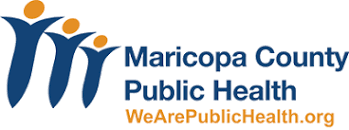A couple weeks ago congress passed and the president signed the Substance Use Disorder Prevention that Promotes Opioid Recovery and Treatment for Patients and Communities Act. Much like Arizona’s Arizona Opioid Epidemic Act – approval of the bill was bipartisan, with a House vote of 393-8 and 98-1 in the Senate.
The final bill creates, expands and reauthorizes programs and policies across several federal agencies, and focuses on prevention, treatment and recovery. The text of the Act is extremely long, but you can view a high level summary on this landing page.
Some of the provisions are in line with recommendations in the 2017 ADHS Opioid Response Report like calling for changing an old federal regulation that prohibited Medicaid from covering patients with substance abuse disorders who were getting treatment in a mental health facility with more than 16 beds. The effect of the former law limited the number of beds available for low-income patients suffering from addiction- so hopefully the network of treatment facilities will expand as a result of this change in the law. The new federal law allows for 30 days of residential treatment coverage.
The new law allows nurse practitioners and physician assistants to prescribe buprenorphine, which is an anti-addiction medication that requires a special license and extra training. For the next 5 years, it will also allow nurse anesthetists, nurse midwives and clinical nurse specialists to prescribe buprenorphine. Right now, only about 5% of doctors are licensed to prescribe it. It’ll take time for the inventory of prescribers to increase because of the training that’s required- but over time this provision will help network capacity especially in rural areas.
The Act also creates a grant program for comprehensive recovery centers that include housing and job training, as well as mental and physical health care. It will also increase access to medication-assisted treatment.
Some aspects of that law that relate to Medicaid include:
-
Temporarily requires coverage of medication-assisted treatment under Medicaid;
-
Prohibiting the termination of Medicaid eligibility for juveniles who are inmates of public institutions;
-
Requiring CMS to establish a demonstration project to increase provider treatment capacity for substance-use disorders;
-
Requiring state Medicaid programs to establish drug management programs and drug-review and utilization requirements for at-risk members; and
-
Extending enhanced federal matching rate for expenditures regarding substance-use disorder health-home services under Medicaid.
Interestingly, the bill includes a provision to help stop the flow of black-market opioids into the country by mail, especially synthetic fentanyl and its analogs. The US Postal Service will need to provide the name and address of the sender and the contents of at least 70% percent of all international packages, and 100% of packages from China.
All international shipments will need to have the name and address of the sender by the end of 2020. The Postal Service was also given the authority to block or destroy shipments for which the information isn’t provided.
The Substance Use Disorder Prevention that Promotes Opioid Recovery and Treatment for Patients and Communities Act is long and comprehensive so I can’t cover everything…. But the bottom line is that public health policy – both here in AZ and now nationally is beginning to address the epidemic.

